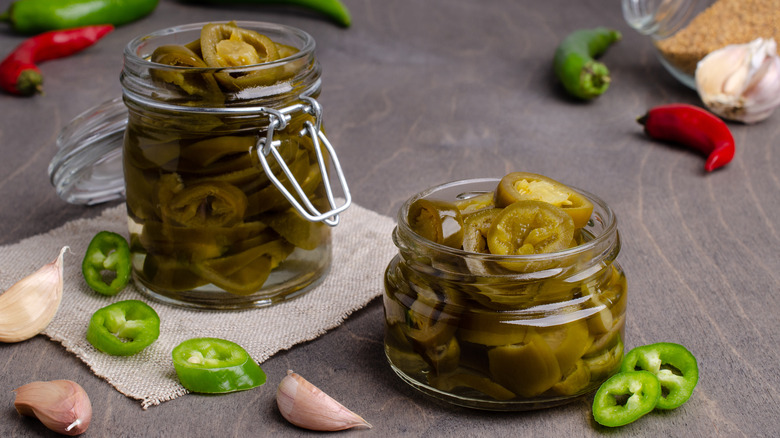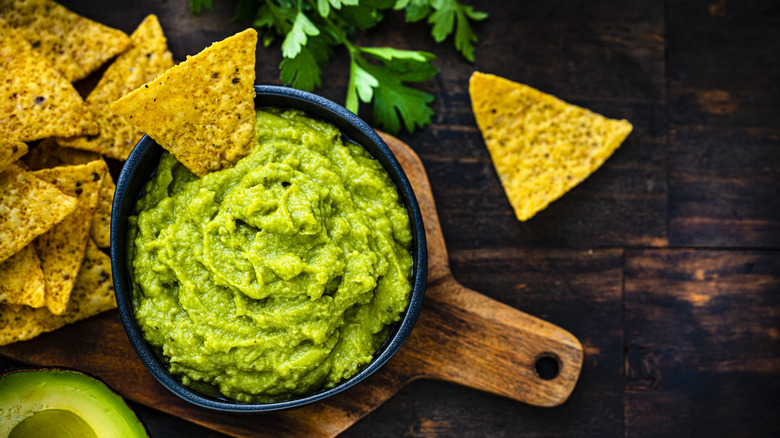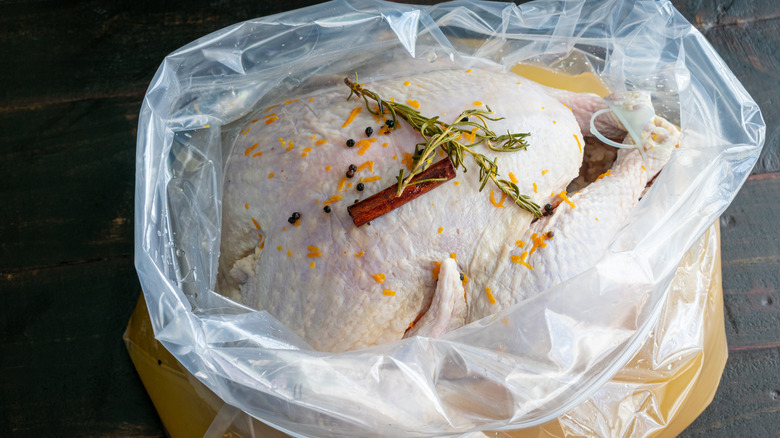You're Not Using The Best Part Of Canned Pickled Jalapeños
The main attraction in a can or jar of pickled jalapeños is obviously the tangy green chiles themselves — but if you're throwing out the liquid that they soak in, you're missing a seriously delicious ingredient with a wide range of uses.
That liquid is sometimes described as "juice," but in reality it's a brine, relatively similar to so-called pickle juice that you'd get in any other kind of store-bought pickled product. At its simplest, this brine is just a mix of water, vinegar, and salt, which preserves and pickles the chiles. Of course, if you've ever tasted it, you probably realize that it's a lot more zingy than this list of extremely simple ingredients would imply. There are a couple of reasons for this — firstly, that liquid has a bunch of spicy peppers hanging out in it, so it'll pick up some of their flavor. The brine can become spicy from the capsaicin in the peppers getting mixed into it, and sometimes, jalapeño seeds might just get loose into the brine — they tend to be coated in capsaicin and can add heat, too. Depending on your recipe or the brand you buy, the brine may have other ingredients: A little sugar is common, and herbs or aromatics like garlic also find their way in pretty frequently. Some varieties even include a little onion and carrot, which may also impart flavor. This brine can be used for everything from dips to dressings to meat prep.
What you can use jalapeño brine for
Theoretically, you could try using that jalapeño brine in any recipe that calls for any kind of acidic or vinegary kick. It could work well in a vinaigrette, taking the place of some or all of the vinegar from the recipe. It also works as an add-in for dips — especially creamy or cheesy dips where the acid will cut through some of the fatty richness. Guacamole is a great vehicle, too: Many recipes already call for jalapeños, so you can lean into that further with a splash of brine from the can or jar. Of course, you may want to balance out other components so you don't end up with a hyper-acidic guac: This could mean cutting back on other acids like lime juice.
Realistically, wherever pickle juice works, jalapeño juice could work (as long as you're okay with a little extra heat). It can add some extra flavor to boiled or steamed vegetables: Just add it to the water. Although vinegar salad dressings are an obvious setting, it also works well with heavier mayo dressings (like in potato salad) to balance out the fattiness. It can even work in drinks: It can substitute the olive brine in a martini, or as a spicy kick in a Bloody Mary. Perhaps most obviously, you can also use it to pickle more vegetables, too.
It's especially good for meats
At some point in your home cooking journey, you'll likely have been advised to brine your meat. This has two big benefits: It tenderizes the meat and also helps it retain moisture, so the end product will be both soft and juicier. A lot of guides to brining meat recommend simply placing it into salty water (sometimes with some sugar) for a few hours. But you can use jalapeño brine, which contains vinegar. There's no shortage of fried chicken recipes that call for brining the meat in vinegary pickle juice. Acids like vinegar or citrus juice help tenderize meat, although if left too long, they can have the opposite effect and toughen it up — so don't overdo it with the soaking time. One hour in the jalapeño brine for each pound of meat is a good measuring stick. Remember that if there are other spices or flavors in the jalapeño brine (like garlic), the brine will effectively double as a marinade, potentially adding some bonus flavor into the meat.
As a side note, dry brines also exist, but this involves using mostly just dry salt, so decidedly non-dry jalapeño brine obviously won't work for this.


